Welcome back to Disney Through the Decades 1940’s.
Due to a busy work schedule and to avoid my site becoming too Disney-centric I’ve decided to end this particular blog for the time being. As Disney+ launches more content I am intrigued to see if they keep this function on the app. Nevertheless, there is still plenty to review during the interim.
This section of the Through the Decades 1940’s will see a variety of controversies and changes in cinematic styles. The war era begins an onset of Disney anthology films, that held the company together by a small thread until the 1950’s. As always I have noticed faults with the Through the Decades section which I have highlighted in the post.
Chef Donald 1941
This film is one of Donald’s best. The comedic timing is not matched in some of his later films.
The story begins with Donald baking alongside a radio host cook. Things are going well until he accidentally places glue in the mixing bowl. Hilarity ensues as he furiously tries to cook with the elastic mixture.
The Little Whirlwind 1941
Mickey exchanges his gardening skills for a piece of cake. Unfortunately, Mickey encounters a rouge little twister set on making a mess of his hard work. The animation has reached a new standard for Mickey films, the clothing dimensions are better, even the eyes and nose seem more defined. This is also the first appearance of Minnie’s signature bow. Side note: the soundtrack from The Band Concert is used again when the mother cyclone appears.
The Reluctant Dragon 1941
The Reluctant Dragon is a joyful discovery for die-hard Disney fans. Not only does it work as a great source of entertainment but also as a documentary to the many processes involved in making animated movies during the 1940’s. There is so much to mention from the film that I will try to only mention specific highlights.
Robert Benchley’s wife suggests he pitch a film idea for Walt Disney. However, when he arrives at the studio, he ends up receiving a magical tour. He will soon learn much of the intricate works of Disney.
The majority of film works as a documentary about the Walt Disney Studios, shedding light of the work involved in making the feature films. This ranges from the animators drawing classes (live-action), storyboards, sculptures, special effects, voice acting, and even sound effects.
In this film, the artists are occupied animating the films Dumbo and Bambi. It allows viewers to see how long it took to produce a movie as Bambi was not released until a few years later.
The section that focus on Dumbo is arguably the most interesting scene in the movie. Audiences are introduced to Casey Junior the train, and learn how the sound effects are created to make the voice and sound of a steam train.
Honestly, it looks like so much fun to have made films in this era. One wonders if the intention was to poach new creative teams via the movie. It works well at portraying the company as extremely fun, painting live animals in a room, watching actors clucking or quacking away etc. Speaking of quacking and my love of Donald it seems crucial to mention that audience can meet the actor who voices Donald Duck. Despite following voice ‘tutorial’ on how to sound like a duck I was unable to replicate Donald’s voice. The actor claims you must form an air pocket in the cheek allows you to sound like a duck.
The multi-pan camera was used for Snow White is also demonstrated in the film showing the sheer ingenuity of the company. Whilst technological advances have made film-making easier, e.g animators do not need to remove the dust of animation to avoid it being used, it is sad to realise this beautiful art form is now only a thing of the past. The paints, sculptures and laborious effects look like real magic.
Dumbo 1941
Disney+ plus mistake 4. Technically this is not included in the through the decade’s option on Disney+. There could be underlying reasons for this, but it’s a mistake nonetheless. Dumbo is the fourth animated classic film made by the Disney company following from Fantasia. The film received favourable reviews from audiences of the time. Dumbo also recouped many of the loses made from Fantasia. Perhaps this film is omitted from the list due to many of its controversies over the years.

The most controversial scene, which I think should be edited out of the, revolves around black workmen building the circus tent. If you actually stop to listen to the lyrics you will be shocked by the racial stereotypes. The most cited racist moment from Dumbo revolves around three crows, who scat. It is believed the artistic choices were made for racial stereotyping due to the way they dance and sing. I have mixed views on the crows because frankly, they are the nicest set of characters in the film. Aside from Timothy Q mouse, they are the only characters to help Dumbo overcome his issues.
Of course, it is worth stressing Dumbo is culturally outdated and reflective of the time it was made. When watching the film I like to focus on the theme of the movie rather than some of the racism surrounding the time of its release. The story focuses on an elephant with big ears who must overcome adversity from bullies and oppressors. The simple story of the underdog overcoming obscene odds has allowed Dumbo to stand the test of time.
Regardless of the issues, it is worth including this film in your Disney binge. The story is simplistic and pretty. There are scenes that manage to evoke pure joy and sadness. The inspirational story follows Dumbo overcoming extreme odds and using his sensational ears to soar to fame.
Goofy How to Swim 1942
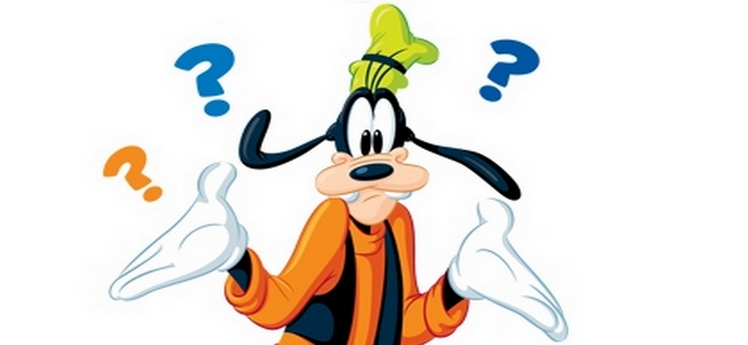
We kick-start 1942 with Goofy. The short film follows the same narrative of a how-to manual from previous Goofy films. Filled with similar slapstick gags that offer mild humour.
Goofy How to Fish 1942
Goofy demonstrates how to fish or rather how not to fish. Many of the Goofy film’s tend to be narrated which allows for a sense of storyline amongst the many gags. However, the film is fairly forgettable.
Goofy the Olympic Champ 1942
This Goofy film takes a break from the how-to formula. Instead, it takes the audience on a history lesson regarding the Olympics. The traditions of the torch and the sports of the game, i.e. track, pole vault, hammer throwing etc. Overall, the film is enjoyable but after watching three Goofy shorts in succession it can feel rather repetitive.
Mickey’s Birthday Party 1942
Minnie has arranged a surprise birthday party for Mickey with many of his friends including, Donald and Goofy. As they jam together in the party Goofy attempts to bake a cake. The film truly evokes the feeling of the 1940’s with the characters all jamming or tap dancing with the appropriate clothing attire of the time. It has a squeaky clean vibe about it.
Bambi 1942
Bambi is the fifth feature film animated classic from the company. It took years for the team to complete the complex artwork that makes the film look so decadent, even for today’s standards. I’ve got mixed opinions on the movie and would go as far as to rank it as one of my least favourite Disney films despite the many merits it offers.
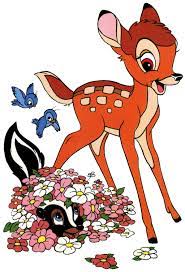
One cannot help but draw similarities between Bambi and The Lion King, both tell the of the grand circle of life in the animal kingdom and the trials/tribulations from growing up. Though in this case one would say ‘Love is a Song that Never Ends’ rather then ‘Circle of Life.’
Nevertheless, Bambi is clearly distinct from the other films in the cannon. There’s a documentary feel regarding the animals and the nature around them. For modern audiences this might feel a tad slow as little action takes place for the first half of the movie. Instead, we see cute scenes of a baby fawn trying to walk on ice. I must admit the scene with the skunk being named Flower is a piece of cinematic genius.
However, the defining moment is the death of Bambi’s mother. This was the most heartbreaking scene created for a Disney film until the death of a cetian Lion decades later. The scene was greeted with much disdain from many critics, including Walt Disney’s own daughters, who believed Walt should’ve amended the story to be more cheerful.
Donald’s Tire Trouble 1943
When Donald obtains a flat tire he is forced to stop his car and fix the issue. Unfortunately, the task proves more difficult for Donald then he expects. As usual humour ensues throughout this short. Perhaps I am biased but Donald films are simply hilarious.
Saludos Amigos 1943
This is the first of many anthology films created during the Second World War. During this time the company invested many of its efforts in short films for the troops and creating propaganda films. This resulted in anthology films being released by the studios for the next the remainder of the 1940’s. This is the first of four anthology movies by the Walt Disney company.
Saludos Amigos was created with the intention of getting good relations between South America and North America. The film focuses on the animators of Disney travelling through Latin America. As they study the land for creative inspiration from Latin America. Donald and Goofy are used as narrative tools to explore the cultures of different regions. Side note: This is the first time I hear Goofy use his catchphrase ah-yuck. The film also introduces Joe Carico, Donald’s Latin American cousin.
Goofy How to Play Football 1944
As an englishman I feel this should be called How to Play American football, but let’s not get pedantic. Given my lack of understanding for sports this actually worked as a semi-educational film regarding the rules of American football. Generally, I find Goofy films are geared toward more masculine narratives from the 1940’s. Whilst insightful it is pretty boring if you are not into sports.
The Three Caballeros 1945
This is the first feature film that works as a sequel in the Walt Disney films. The Three Caballeros continues the exploration of South America using some of the character introduced from Saludos Amigos. Unlike Saludos Amigos the film is pieced together with an overly arch around Donald Duck opening birthday presents from is cousin in South America.
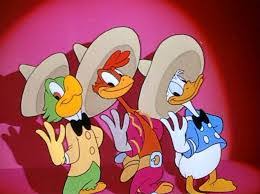
The choice to have Donald drive the narrative gives this film a more linear approach to storytelling. Although it is still an anthology film series it is the superior of the two films, allowing the story to unroll more organically. The movie incorporates a mixture of live action and animation. This technology was used in earlier films such as, Song of the South, and would be used many times throughout Disney’s career.
Whilst The Three Caballeros is not comparable to the likes of Fantasia or Cinderella, the music is vibrant and the film is enjoyable to watch. Many of the songs and lingo are spoken in spanish or portuguese. This allows latin culture and rhythm to give the film high energy. The last 10 minutes of the film are the most complicated and peculiar pieces of cinema in the Disney anthology. Instead of trying to make sense of the story just go along for the ride. You might feel like you arrived in some crazed dream or fever.
Goofy Double Dribble 1946
A bunch of goofs are haphazardly playing basketball, creating their own rules to win. Interesting fact the players in the game are named after Disney animators.
Donald Chip and Dale 1947
I will end this particular series from my blog with the first Chip and Dale appearance on Disney+. This film also marks a new introduction song to the Donald Duck cartoons which is rather delightful.
Donald is out of wood to the fire, little does he know the limber he has cut was home two the chipmunks. The humour is enjoyable with the usual anger gags.
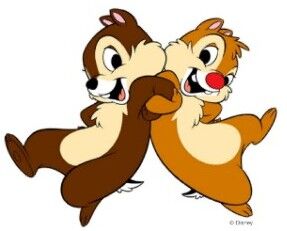

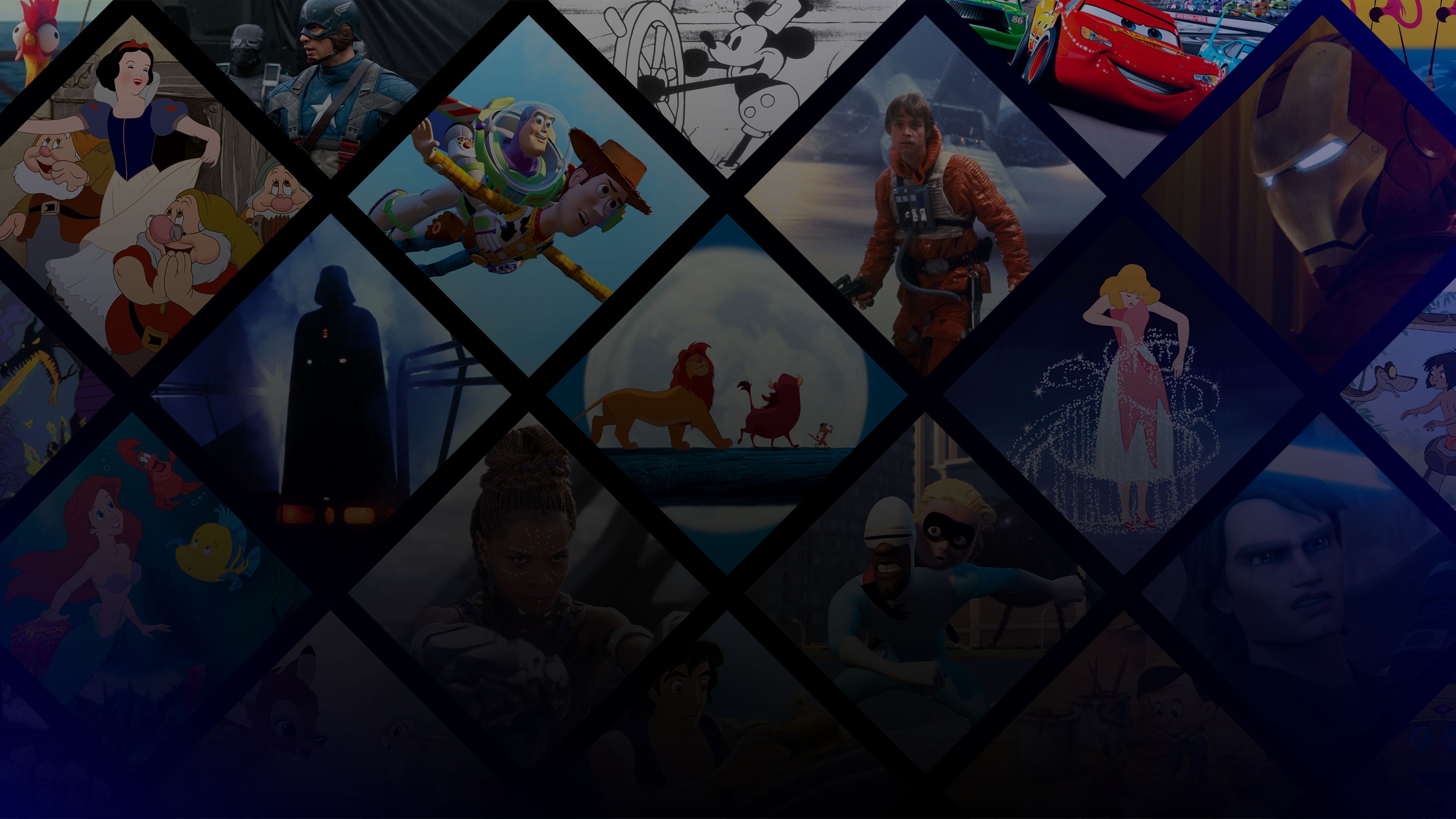
Be First to Comment